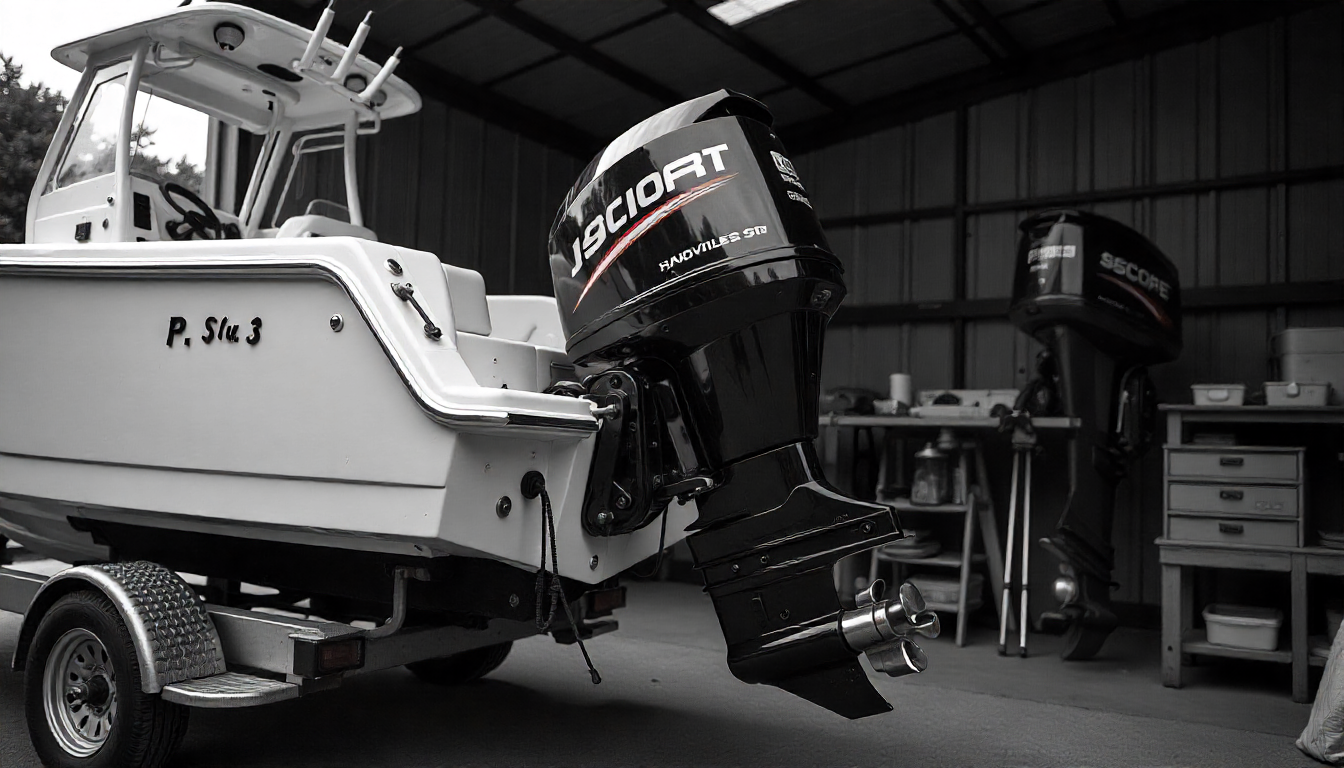Choosing the correct shaft length for your outboard motor isn’t just a matter of convenience—it’s a decision that can affect the performance, safety, and efficiency of your entire boating experience. Whether you’re a casual weekend sailor or an offshore adventurer, understanding how shaft dimensions interact with your boat’s design is essential to getting the most out of your equipment.
Why Shaft Length Matters for an Outboard Motor
The relationship between your boat’s transom height, the waterline, and the motor’s shaft length is a delicate balance. Too short, and the propeller risks drawing in air instead of water, reducing thrust. Too long, and you’ll face additional drag, which can slow you down and increase fuel consumption. In either case, you risk creating mechanical strain and potentially unsafe handling.
Manufacturers design motors with specific shaft type length options—typically short shaft, long shaft, and extra long models—to match standard transom heights. Picking the right one is not guesswork; it’s about precise measurement and matching.
Measuring for the Correct Shaft Length
To determine the correct shaft length, you’ll need to measure your transom height from the top center of the mounting bracket down to the bottom of the hull at the keel. For most small boats, standard measurements are:
- 15 inches – Short shaft
- 20 inches – Long shaft
- 25 inches – Extra long shaft
These measurements are not arbitrary—they match the point where the cavitation plate should sit in relation to the hull’s bottom. Ideally, the cavitation plate should align with or be just below the hull’s bottom line to maintain efficient propulsion.
The Role of the Cavitation Plate
The cavitation plate acts as a stabilizer, helping to keep water pressure consistent at the propeller. If it’s too high above the hull, the propeller can draw in air, leading to cavitation. Too low, and you’ll encounter unnecessary drag. This is why proper shaft lengths are critical to boat performance and why manufacturers stress correct alignment.
How Shaft Length Can Affect Performance
The wrong shaft length can directly affect performance. If the motor sits too high, you risk ventilation—where the propeller loses its bite in the water. If it sits too low, your boat will work harder than necessary, which can affect performance and increase fuel consumption. In both cases, you may notice unstable handling, especially in choppy seas.
Long Shaft vs. Short Shaft Considerations
Choosing between a short shaft and a long shaft often depends on your transom height and the type of waters you navigate.
- Short shaft motors are suited for small boats with low transoms, like dinghies and certain inflatables.
- Long shaft motors are common for sailboats and deeper transom designs, where a longer reach ensures the propeller remains submerged even in rough conditions.
- Extra long shafts are typically found on offshore or ocean-going vessels, where keeping the propeller deep in the water is vital for safety.
If you select too long a shaft for your boat, you may find that your cavitation plate sits far below the hull line. This can cause additional drag and increase wear on the engine mount.
The Effects of Incorrect Shaft Length
Problems caused by incorrect length shaft include:
- Increased drag that slows the boat
- Higher fuel consumption
- Reduced performance due to propeller misalignment
- Mechanical strain on the bracket and mount
- Potential steering issues in following seas
For instance, a long shaft on a boat designed for a short shaft may push the motor too deep, increasing resistance. On the other hand, a short shaft on a deep transom may leave the propeller exposed in rough waters.
Matching Shaft Length to Your Boat Type
Different boats require different shaft configurations:
- Small fishing boats: Often use short shaft motors due to lower transoms.
- Sailboats: Generally require long shaft or extra long shaft motors to keep propulsion steady when heeled over.
- Inflatables: Can vary depending on transom height, but short shaft is common for portable use.
- Offshore cruisers: Need extra long shafts to cope with wave troughs and high transoms.
Remember: a mismatch can affect the performance and lifespan of your motor.
The Role of the Bracket and Mount
The mounting bracket and motor mount must be strong enough to handle the engine’s position in the water. Incorrect shaft lengths place unusual stress on these points. Always check that the mount is level, aligned, and capable of supporting the engine without flexing.
Practical Tips for Selecting the Right Shaft
- Measure Twice – Double-check your transom height.
- Consider Your Waters – Calm lakes require different setups than open seas.
- Account for Load – Extra passengers or gear can lower the boat in the water, changing the optimal shaft height.
- Test Run – If possible, test a motor on your boat before buying.
- Consult the Manual – Manufacturers provide recommended shaft lengths for each boat type.
When to Consider Changing Shaft Length
If you’re experiencing issues like high spray, unstable steering, or poor top speed, your shaft length might be wrong. In such cases, switching to a motor with a more suitable shaft—or modifying your mount—can resolve problems and restore proper handling.
The Bottom Line on Shaft Selection
Getting the correct shaft length for your outboard motor is not just about matching numbers; it’s about optimizing your entire boating experience. Proper alignment ensures the cavitation plate works efficiently, reduces drag, and keeps your boat moving smoothly through the water.
Selecting the right fit may take a bit of measuring and research, but the payoff is better performance, improved safety, and lower operating costs. Whether you’re buying new or upgrading, take the time to get it right—and enjoy trouble-free days on the water.

 How to Select the Correct Shaft Length for Your Outboard Motor">
How to Select the Correct Shaft Length for Your Outboard Motor">
